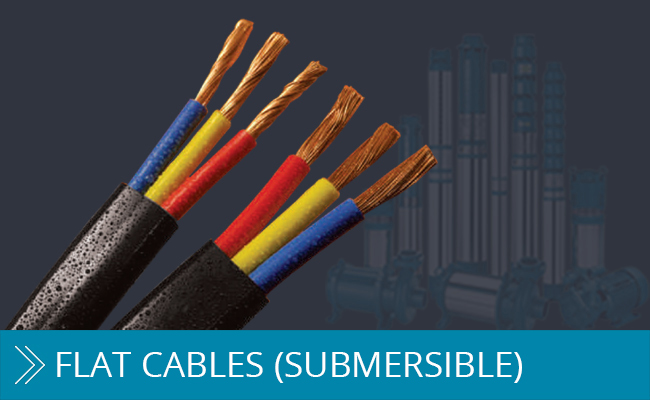Even a novice knows that electricity and water do not mix. Since it is an excellent conductor of electricity, any small charge can give you a massive electric shock. Yet there are a number of reasons why we need a mechanism to pass electricity through water. For instance, a submersible pump in a water cooler and the cables that carry the electricity it generates.
Submersible flat cables are so called because these are used in wet ground, underwater or ‘submerged’ in water. This very function makes the composition of the cable important. They are used in both fresh and salt water.
Some of the common places where submersible cables are used:
— Irrigation
— Water-related industries, such as bottling plants
— Fountains and pools
— Fire Fighting
— Reservoirs and water supply plants
— Aquariums
— Sewage treatment plants
— Deep boring wells
— Heavy rainfall areas where even open cables are exposed to wet conditions.
Submersible cables also work in rather restrictive environment. Hence they must be made of extremely durable material that can withstand wet conditions. Since, the water may also carry grease, the cable should also be able to withstand greasy environment. Usually this material is a plastic and rubber compound with plain or tinned copper used for conduction.
So, what are the essential features in a submersible flat cables? To begin with, it must be
-
- Durable: This is always a necessary feature when selecting any kind of cable. After all, you do not want to go to all the trouble of installing cables only to change them every year. But given the high stakes in the submerged conditions, durability becomes even more important. A cable that cannot last the test of time will disintegrate faster and can fill its surrounding with electric charge. This would be very dangerous. Hence, we are looking for cables made with high quality material.
-
- Resistant to moisture, abrasion and grease: Water causes high wear and tear. So, a material that can withstand water’s erosion capacity will be ideal, such as plastic. The cables are also often used in greasy or mildly greasy conditions. Together with water this can cause high abrasions. So, the material should be able to withstand both water and grease. Usually this is a compound of rubber and plastic because of its ability to resist water erosion.
-
- Sturdy: Any good cable must have a sturdy construction. The cable is actually wires, an insulating material around it and the cable jacket. In addition, it can have multiple cores. All this means that the cable should have a nice heft and weight or a sturdy construction. A thin cable most likely does not have the proper construction within.
-
- Longer flex life: This is not be confused with high-flex cable, which is just a highly flexible and supple cable. High-flex-life cable, on the other hand, is designed to survive 10 mn to 20 mn flexing cycles. It may actually seem stiffer than high-flex cable. The other difference between the two is the longevity of the flexibility. Although the high-flex wire may seem more flexible in the beginning, it is the high-flex-life cable which will retain its flexibility for a longer time. These are cables that will withstand millions of twisting, rolling, bending and folding.
-
- Efficient in carrying electricity: This is the primary function of the cable! But it must nevertheless be checked.
-
- Composed of top quality electrical features: A cable, like everything, is the sum of all its part. A good quality cable must, therefore, be composed of high quality raw material. You are looking for PVC sheathing and copper or aluminium for conducting. The first is important for ensuring safety and the second is important for passing electricity.
-
- Withstand given temperature range: Most submersible cables can withstand temperatures between of 40 °C to 105 °C. This is the temperature range that we mostly find in water.
-
- Have conductors with PVC compounds
—Fire retardant: You won’t need this in the water, but it would be a vital condition when the cable comes out of water. Look for flame retardant or fire retardant jackets.
In addition, you should look for cables that are:
— Lead free, non-toxic,eco-friendly: Submersible flat cables stay in the water for a long time and hence, can have a profound effect on its composition. Lead cables will eventually deteriorate and release the extremely toxic element. There are other toxic materials that you should avoid. A neutral PVC is a better option.






